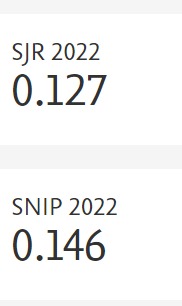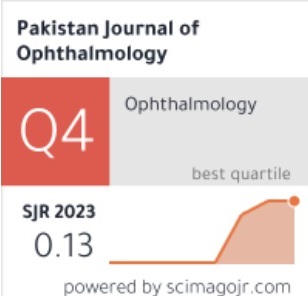Early Post-Operative Effect of Phacoemulsification on Anterior Chamber Depth and Intraocular Pressure in Patients with Cataract
http://doi.org/10.36351/pjo.v37i2.1176
DOI:
https://doi.org/10.36351/pjo.v37i2.1176Keywords:
Phacoemulsification, Cataract, Intraocular pressure, Lens, Anterior chamber depth.Abstract
Purpose: To determine the Anterior Chamber depth and Intraocular pressure change following uncomplicated phacoemulsification.
Study Design: Quasi experimental study.
Place and Duration of Study: Layyton Rehmatullah Benevolent Trust Free Eye and Cancer Hospital, Lahore from 16/12/2017 to 15/06/2018.
Methods: One hundred and thirty nine patients who came to Layyton Rehmatullah Benevolent Trust Free Eye for phacoemulsification and IOL implantation were included in the study. Anterior Chamber depth was measured with IOL Master and intraocular pressure was determined using Goldmann Applanation Tonometer one day before and one month after surgery. Data was recorded on a self-designed proforma. Comparison between pre- and post-operative data with respect to change was analyzed by chi-square test. P-value ? 0.05 was considered significant.
Results: The mean intra-ocular pressure dropped from 14.36 ± 4.19 mmHg to 12.14 ± 4.26 mmHg 1 month after surgery with a mean drop of 2.21 ± 0.65 mmHg while the mean anterior chamber depth increased from 2.31 ± 0.08 mm to 3.59 ± 0.37 mm with a mean increase of 1.29 ± 0.36 mm. There was no statistically significant difference in the mean change of intra-ocular pressure and anterior chamber depth across various subgroups based on patient’s age, gender and duration of cataract.
Conclusion: Phacoemulsification and IOL implantation not only improves the visual acuity by removing the cataract but also deepens the anterior chamber and decreases intra-ocular pressure, which can have a beneficial effect in glaucoma patients.
Key Words: Phacoemulsification, Cataract, Intraocular pressure, Lens, Anterior chamber depth.






